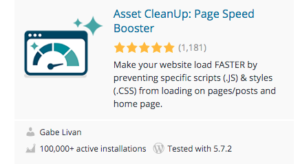

However, it would be much better to name the file 2012-Ford-Mustang-LX-Red.jpg. You could use the generic name your camera assigned to the image (e.g., DCMIMAGE10.jpg). Search engines not only crawl the text on your webpage, they also crawl your image file names. Creating descriptive, keyword-rich file names is crucial for image optimization. When it comes to image SEO, it’s important to use relevant keywords to help your webpage rank on search engines. It's really easy to blow through hundreds of product shots and keep the default file names your camera assigns.


Some 62% of Gen Z and millennial consumers want visual search more than any other new technology. What’s more, visual search is becoming more important, as seen with Google introducing a new search function that combines images and text into one query. Image optimization can help rank your images in Google’s Image Search, which can bring more traffic to your website and build your brand. Recent data shows that images are returned for 32% of search queries on Google. Optimized images help both readers and search engines understand your website better and get your content seen online. Improved user experience and interactions with your site have a positive impact on search engine rankings, which can improve engagement, conversions, and customer retention. Reducing page load times by even one second will improve your user’s experience. Pages with a longer load time tend to have higher bounce rates and lower average time on page. The BBC found that for every extra second of page load time, 10% of users will leave. Anything longer than that doesn’t feel “instant.” Delays of one second are enough to interrupt a person’s thought process. People can detect delays as short as 1/10th of a second. Page speed is important to a visitor's experience. A slow page means that search engines crawl fewer pages with their crawl budget, which can negatively affect your indexing. Research from Moz has shown that Google may specifically measure time to first byte when it considers page speed. Google has suggested that site speed is one of the signals used by its algorithm to rank pages.

Page speed is how fast content on your page loads. Should there be a mere two-second delay in your page speed, your bounce rate can increase by 103%. They create a better browsing experience for shoppers. Image optimization for web and mobile exists to make web pages load faster. Image optimization helps lower your webpage’s weight and is a core tenet of good ecommerce web design, which results in the following benefits: Improved website speed This can result in a negative impact on your website performance.
How to reduce page size of website archive#
Data from HTTP Archive reveals that unoptimized images make up, on average, 75% of a total webpage’s weight. Images are the largest contributor to overall page size, which makes pages slow to load. WEBP images)īy finding the balance between the three, you can reduce image size and improve website performance. The goal of image optimization is to create high-quality images with the lowest file size. And that they don’t hinder web performance. Image optimization means ensuring your images look flawless on desktop and mobile. That is, getting your product images and decorative images to rank on Google and other image search engines. Image optimization is about reducing the file size of your images as much as possible, without sacrificing quality, so your page load times remain low.


 0 kommentar(er)
0 kommentar(er)
